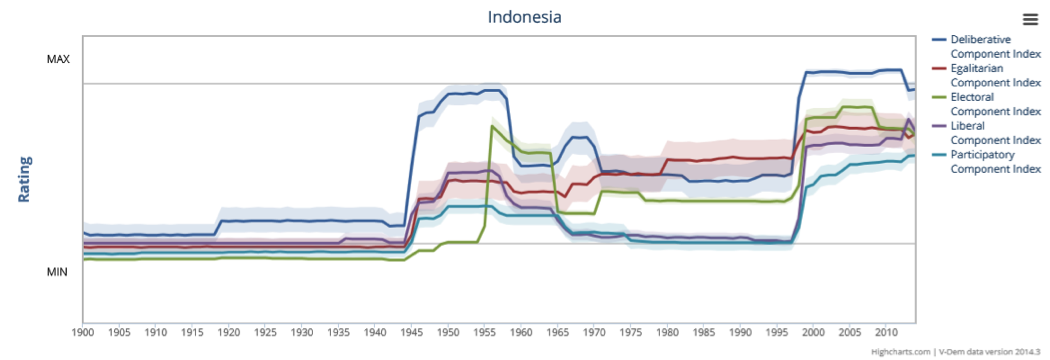400 indicators measuring different aspects of democracy
By: V-Dem Staff
May 05, 2015
In the graph below, the five democracy components have been graphed for one of our newly updated countries, Indonesia, from 1900 to 2014. This is a good example of how V-Dem allows us to investigate different aspects of democracy as their development may not follow a uniform trajectory. In the beginning of the 20th century in Indonesia, as a colonized country, all democracy components were at low levels, within or just above the minimum level. In the 1940s, in connection with its forthcoming independence, all components experienced an increase. The deliberative component almost reaches the maximum level within only six years. In 1998, the country experienced a revolution in reaction to President Suharto being approved for a seventh term by the parliament. His replacement, President Habibie, carried out democratic reforms including releasing political prisoners and lifting controls on freedom of speech and association. Elections for the national, provincial, and sub-provincial parliaments were then held in 1999. This spike in democracy is clearly reflected in all dimensions of democracy included in the graph. Today, all components are at or above the middle of the scale and the country is most democratic in terms of the deliberative aspect.


